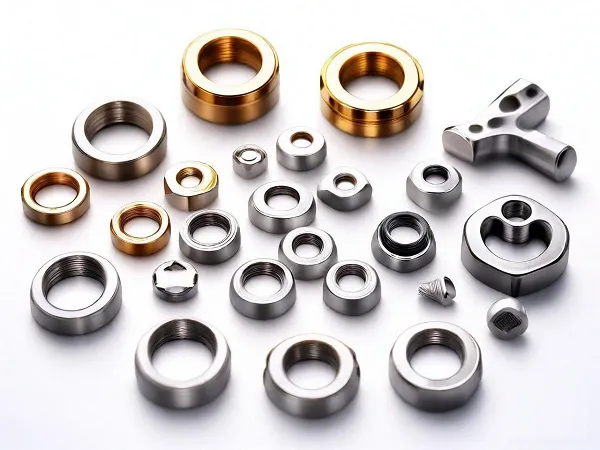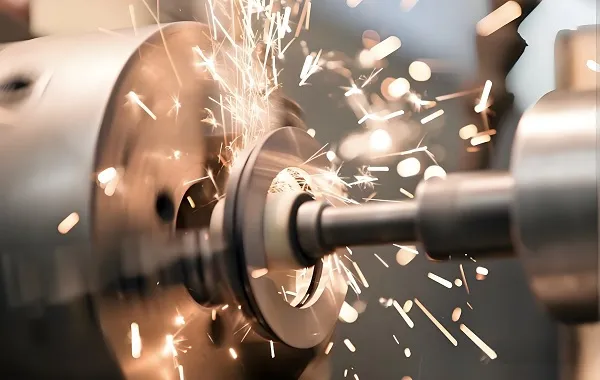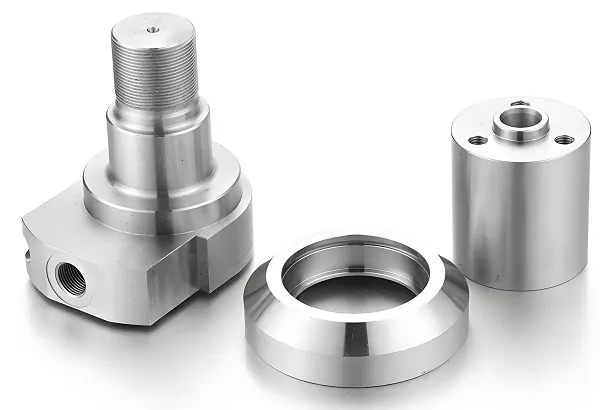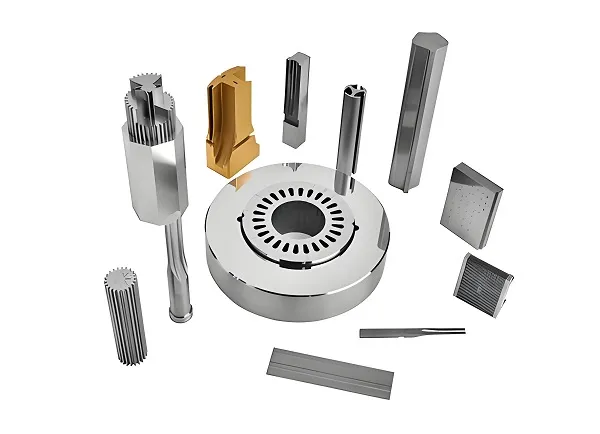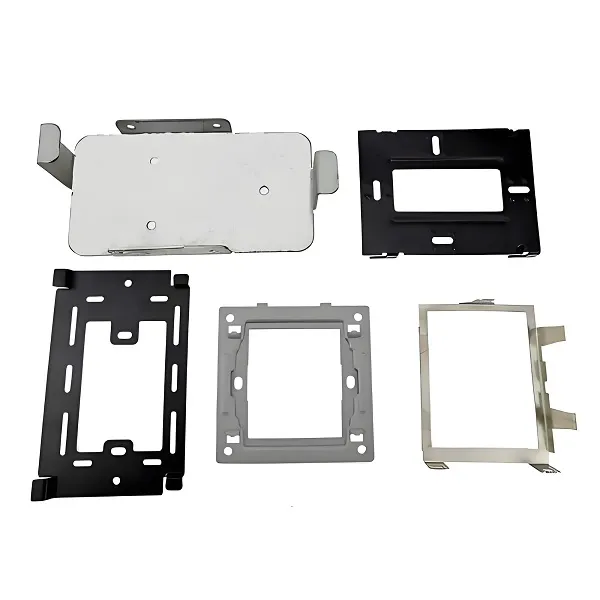With the continuous development of science and technology, CNC (Computer Numerical Control) machining technology is more and more widely used in the wood processing industry, CNC machining technology not only improves the accuracy and efficiency of wood processing, but also brings higher production efficiency for enterprises. However, not all woods are suitable for CNC machining. This article will demonstrate what wood is suitable for CNC machining, while elaborating on the advantages of wood CNC, applicable fields and processing technology, and interspersed with the corresponding technology Q & A, in order to provide reference for the wood processing industry.

1. Types of wood suitable for CNC machining
The selection of wood for CNC machining is crucial, as it directly affects the machining effect and the quality of the final product. The following are several types of wood suitable for CNC machining and their characteristics:
1.1 Hardwood
Hardwoods such as oak, maple, walnut, etc. are ideal for CNC machining due to their high hardness, density and resistance to deformation. Hardwoods are better able to maintain shape and size during machining, reduce burrs and tearing, and improve machining quality.
1.2 Dry and stable wood
CNC machining requires dry and stable wood to prevent deformation and cracking during machining. Therefore, it is very important to select dry treated wood. For example, kiln-dried wood with its moisture content controlled within a certain range can better adapt to the requirements of CNC processing.
1.3 Clear-grained wood
Clearly textured wood can present a better visual effect during CNC machining. For example, pine, beech and other wood, its texture is natural, beautiful, processed products more artistic and ornamental.
1.4 Easy to cut wood
Choose easy to cut wood, can reduce tool wear, improve processing efficiency. For example, poplar, paulownia and other soft wood, although the hardness is low, but the cutting performance is good, suitable for CNC processing.
2. Advantages of wood CNC
CNC machining technology has significant advantages in the wood processing industry, mainly reflected in the following aspects:
2.1 high precision machining
CNC machining centers are controlled by computer programs and can accurately perform complex processing tasks. In wood processing, whether it is complex carving, cutting or punching and other processes, CNC machining centers can be completed with extremely high precision, thus ensuring the quality and appearance of the product effect. This high-precision processing not only meets the high requirements of customers for product quality, but also improves the competitiveness of enterprises.
2.2 High efficiency production
CNC machining centers have the ability of automated machining, which can continuously and stably carry out production. Compared with the traditional manual or mechanical processing methods, CNC machining center greatly reduces the processing time and improves the production efficiency. In addition, CNC machining centers can also realize multi-process simultaneous machining, which further improves production efficiency. This kind of high-efficiency production helps enterprises quickly respond to market demand and expand production scale.
2.3 Strong adaptability
CNC machining centers are suitable for a variety of wood types and processing needs. Whether it is hardwood, softwood or composite materials, CNC machining centers can carry out efficient and accurate processing. At the same time, CNC machining centers can also be customized according to customer needs to meet the diverse needs of the market. This adaptability makes CNC machining centers have a wide range of application prospects in the wood processing industry.
2.4 Improve labor safety and reduce overall costs
The high degree of automation of CNC machining centers reduces the risk of human operation and improves workplace safety. Workers only need to perform simple operation and maintenance work, reducing labor intensity. At the same time, CNC machining centers can be operated without professional supervision, reducing the skill requirements for operators. While the initial investment in CNC machining centers may be high, the economic benefits they bring are significant in the long run. First, CNC machining centers increase productivity and reduce scrap rates, reducing raw material waste and production costs. Second, CNC machining centers reduce the need for manual operations and lower labor costs. Finally, CNC machining centers can extend the service life of wood and improve the added value of products, further improving the economic benefits of enterprises.
3.Applicable fields of wood CNC
The application range of wood CNC processing technology is very wide, covering many fields such as furniture, decoration, construction and handicrafts.
3.1 Furniture Manufacturing
In furniture manufacturing, CNC wood can be used to make furniture parts such as chairs, tables and beds. Through CNC machining, furniture parts of various shapes and sizes can be accurately made to improve the precision and aesthetics of furniture.
3.2 Decoration field
In the field of decoration, CNC wood can be used to make murals, sculptures and other works of art.CNC machining technology can realize the fine carving and cutting of wood, and make decorative works with artistic sense and ornamental.
3.3 Construction field
In the field of construction, CNC wood can be used to make doors, windows, stairs and other building components. Through CNC processing, various shapes and sizes of doors, windows and staircase components can be produced to improve the precision and aesthetics of the building.
3.4 Crafts production
In handicraft production, CNC wood can be used to produce a variety of exquisite handicrafts.CNC machining technology can realize the fine carving and cutting of wood, and produce handicrafts of various shapes and patterns to meet the personalized needs of consumers.
4.Wood CNC processing technology
Wood CNC machining technology involves many aspects, including tool selection, machining path planning, cutting parameter settings and so on. The following is a detailed description of the wood CNC processing technology:
4.1 Tool selection
The tool is a key component in wood CNC machining, which directly affects the machining quality and efficiency. When selecting tools, the following factors should be considered:
Tool material: commonly used wood processing tool materials are high-speed steel and carbide. Carbide tools have higher hardness and wear resistance and are suitable for processing hard wood.
Tool Shape: Select the appropriate tool shape according to the processing needs, such as end mills, ball end mills, helical mills and so on.
Tool size: choose the appropriate tool size according to the size and shape of the machined parts to ensure machining accuracy and efficiency.
4.2 Machining path planning
Machining path planning is an important part of wood CNC machining, which directly affects machining quality and efficiency. When planning the machining path, the following factors should be considered:
Path optimization: reduce empty stroke and repeated cutting by optimizing the machining path to improve machining efficiency.
Avoid collision: Ensure that the machining path does not collide with the machine tool or fixture to avoid damage and failure during machining.
Layered machining: for deeper cuts, use layered machining to control cutting heat and reduce deformation.
4.3 Cutting parameter setting
The setting of cutting parameters directly affects the processing quality and efficiency. When setting the cutting parameters, the following factors should be considered:
Rotational speed and feed rate: select the appropriate rotational speed and feed rate according to the tool material and the hardness of the processed parts to avoid tool damage and wood tearing.
Depth of cut: Select the appropriate depth of cut according to the thickness and shape of the machined part to ensure machining accuracy and efficiency.
Cutting Angle: Select the appropriate cutting angle to reduce the cutting force and improve the machining quality.
5.Technical Q&A
The following are some technical questions and answers about wood CNC machining, designed to help readers better understand wood CNC machining technology:
Q: What are the common tool materials used in wood CNC machining?
A: Commonly used tool materials in wood CNC machining are HSS and carbide. Carbide tools have higher hardness and wear resistance and are suitable for machining hard wood.
Q: How to choose the right tool in wood CNC machining?
A: When selecting a tool, the tool material, shape and size should be considered. Choose the right tool according to the material and shape of the machined part to ensure machining accuracy and efficiency.
Q: What are the common cutting parameters in wood CNC machining?
A: Common cutting parameters in wood CNC machining include rotational speed, feed rate, depth of cut and cutting angle. The setting of these parameters directly affects the machining quality and efficiency.
Q: How to optimize the machining path in wood CNC machining?
A: Optimizing the machining path can improve machining efficiency by reducing empty strokes and repetitive cutting. At the same time, it should be ensured that the machining path does not collide with the machine tool or fixture to avoid damage and malfunction during machining.
Q: How to control cutting heat and minimize deformation in wood CNC machining?
A: In wood CNC machining, cutting heat and deformation reduction can be controlled by layering, selecting appropriate cutting parameters and using coolant. Layered machining can divide a deeper cut into several shallower cutting layers to control cutting heat and minimize deformation. At the same time, choosing the right cutting parameters and using coolant can reduce cutting temperature and cutting force, thus reducing deformation.
Q: How to ensure machining accuracy in wood CNC machining?
A: Ensuring machining accuracy can be achieved by selecting suitable tools, optimizing the machining path, setting cutting parameters precisely and monitoring the machining process. At the same time, machine tools and cutting tools should be kept in good condition and regularly maintained and calibrated.
Q: What are the common faults in wood CNC machining? How to troubleshoot?
A: Common faults in wood CNC machining include damaged tools, lack of machining accuracy, and machine tool failures. Troubleshooting can be achieved by checking tool wear, optimizing machining parameters, and checking the status of machine tools and fixtures. At the same time, the maintenance and upkeep of the equipment should be strengthened to ensure the normal operation of the equipment.
Q: How to reduce production costs in wood CNC machining?
A: Reducing production cost can be achieved by improving machining efficiency, reducing scrap rate, reducing raw material consumption and labor cost. Machining efficiency can be improved by optimizing the machining path, choosing suitable cutting parameters and using efficient tools; scrap rate can be reduced by setting cutting parameters accurately and monitoring the machining process; raw material consumption can be reduced by using raw materials reasonably and recycling waste; labor cost can be reduced by improving the automation degree of the equipment and reducing manual operation.
Q: How to ensure workplace safety in wood CNC machining?
A: Ensuring the safety of the workplace can be realized by strengthening the safety protection of the equipment, carrying out regular inspection and maintenance of the equipment, and providing necessary safety training and protection measures. At the same time, relevant safety regulations and operating procedures should be observed to ensure workplace safety.
Q: How to ensure the quality of processed parts in wood CNC machining?
A: Ensuring the quality of machined parts can be achieved by selecting suitable wood, setting cutting parameters precisely, optimizing machining paths and using high-quality tools. Meanwhile, quality monitoring and inspection during machining should be strengthened to detect and solve quality problems in time.
Conclusion
To summarize, selecting the type of wood suitable for CNC machining is crucial for improving machining quality and efficiency. Hard woods, dry and stable woods, woods with clear grain, and woods that are easy to cut are all suitable choices for CNC machining.


